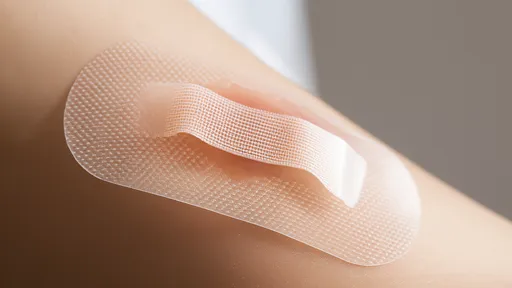For individuals living with diabetes, foot care is not just a matter of hygiene—it’s a critical component of overall health management. Diabetes can lead to complications such as neuropathy and poor circulation, making the feet particularly vulnerable to injuries and infections. A daily foot inspection routine can help prevent serious issues like ulcers or even amputations. This article outlines a thorough daily foot care plan designed specifically for diabetics, emphasizing proactive measures to maintain foot health.
Morning Inspection: Starting the Day Right
Begin each day with a visual and tactile examination of your feet. Sit in a well-lit area and carefully inspect both feet, including the tops, soles, heels, and between the toes. Look for any signs of redness, swelling, cuts, blisters, or discoloration. Neuropathy can dull pain sensations, so even minor injuries may go unnoticed without a deliberate check. Use a mirror if necessary to see the bottoms of your feet clearly. If you notice anything unusual, document it and consult your healthcare provider promptly.
After the visual inspection, gently feel your feet with your hands to detect any abnormalities such as bumps, dry patches, or temperature changes. Warmth could indicate infection, while coldness might suggest circulation problems. This tactile check is just as important as the visual one, as some issues may not be immediately visible to the eye.
Midday Awareness: Staying Vigilant
Throughout the day, remain mindful of how your feet feel. Avoid walking barefoot, even indoors, to reduce the risk of injury. Choose well-fitting, comfortable shoes with adequate support and cushioning. If you experience any discomfort, such as rubbing or pressure points, address it immediately. Diabetic feet are prone to developing calluses and corns, which can escalate into ulcers if neglected. Keep an eye out for any changes in sensation, such as tingling or numbness, and take note of these symptoms for discussion with your doctor.
Hydration is another key aspect of midday foot care. Dry skin can crack and become infected, so apply a diabetic-friendly moisturizer to keep your feet supple. Avoid applying lotion between the toes, as excess moisture in this area can foster fungal growth. If you spend long periods sitting, elevate your feet occasionally to promote circulation and reduce swelling.
Evening Routine: Winding Down with Care
As the day comes to a close, repeat the thorough inspection you conducted in the morning. Pay special attention to any areas that may have been under stress during the day, such as the balls of your feet or pressure points from shoes. Wash your feet with lukewarm water and mild soap, ensuring they are thoroughly dried afterward, especially between the toes. Trim your toenails straight across to prevent ingrown nails, but avoid cutting them too short. If you have difficulty with nail care, consider seeking assistance from a podiatrist.
Before bed, apply a fresh layer of moisturizer if needed, again avoiding the areas between the toes. Wear clean, dry socks made of breathable materials to protect your feet overnight. If you use heating pads or hot water bottles, exercise extreme caution, as burns can occur easily due to reduced sensitivity. Opt for warm socks instead to maintain a comfortable temperature.
Weekly and Monthly Considerations
While daily checks are essential, incorporating weekly and monthly routines can further enhance foot health. Once a week, examine your shoes for any rough spots or foreign objects that could cause irritation. Schedule regular visits to a podiatrist for professional nail care and to address any persistent issues. Monthly, assess your footwear to ensure it remains supportive and well-fitted, as feet can change shape over time.
Educating yourself about potential foot problems and their warning signs is equally important. Attend diabetes education sessions or support groups to stay informed about best practices. Share your foot care routine with family members or caregivers so they can assist when needed. Remember, proactive foot care is a lifelong commitment for diabetics, but it’s one that pays off in preventing complications and maintaining quality of life.
Final Thoughts: Empowerment Through Routine
Adopting a structured daily foot care plan empowers diabetics to take control of their health and minimize risks. Consistency is key—making these checks a habit ensures that potential problems are caught early and managed effectively. By prioritizing foot health, individuals with diabetes can enjoy greater mobility, comfort, and peace of mind. Always consult with healthcare professionals to tailor these practices to your specific needs, and never hesitate to seek medical advice for any concerns. Your feet carry you through life; give them the attention they deserve.

By /Jul 28, 2025

By /Jul 28, 2025

By /Jul 28, 2025

By /Jul 28, 2025

By /Jul 28, 2025

By /Jul 28, 2025

By /Jul 28, 2025

By /Jul 28, 2025

By /Jul 28, 2025

By /Jul 28, 2025

By /Jul 28, 2025

By /Jul 28, 2025

By /Jul 28, 2025

By /Jul 28, 2025

By /Jul 28, 2025

By /Jul 28, 2025

By /Jul 28, 2025

By /Jul 28, 2025